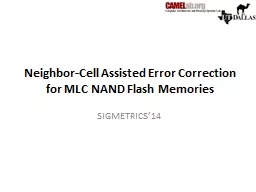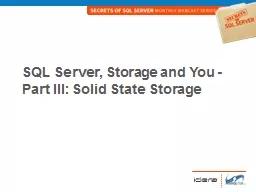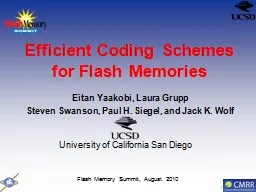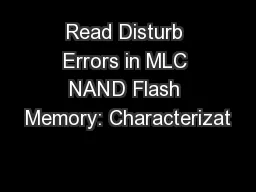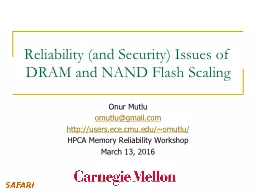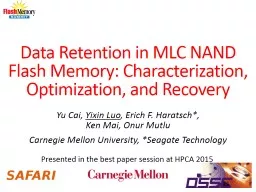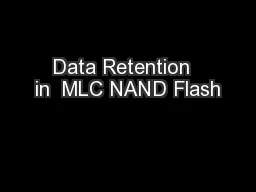PPT-Neighbor-Cell Assisted Error Correction for MLC NAND Flash
Author : marina-yarberry | Published Date : 2017-03-16
SIGMETRICS 14 Summary Problem as PE cycle increases raw BER significantly increases beyond the fixed ECC capability Goal this paper tries to extend lifetime by
Presentation Embed Code
Download Presentation
Download Presentation The PPT/PDF document "Neighbor-Cell Assisted Error Correction ..." is the property of its rightful owner. Permission is granted to download and print the materials on this website for personal, non-commercial use only, and to display it on your personal computer provided you do not modify the materials and that you retain all copyright notices contained in the materials. By downloading content from our website, you accept the terms of this agreement.
Neighbor-Cell Assisted Error Correction for MLC NAND Flash: Transcript
Download Rules Of Document
"Neighbor-Cell Assisted Error Correction for MLC NAND Flash"The content belongs to its owner. You may download and print it for personal use, without modification, and keep all copyright notices. By downloading, you agree to these terms.
Related Documents

